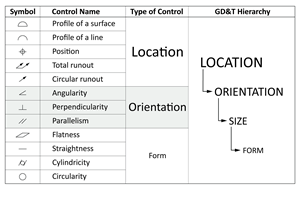CAD/CAM for Increased Productivity, Reduced Lead Times
2013 releases PowerSHAPE CAD/ PowerMILL CAM.
Delcam GmbH introduces the 2013 releases of Delcam’s PowerSHAPE CAD software and PowerMILL CAM system. Both programs include significant enhancements to enable toolmakers to increase productivity, reduce leadtimes and improve quality—regardless of whether they are making molds of any type, press tools or die-casting equipment, the company states.
With its unique combination of solid modeling, surface modeling, direct modeling and triangle editing capabilities, PowerSHAPE provides the most comprehensive range of design and reverse engineering techniques available in a single CAD program, according to the company. Having all the different technologies in the same package reduces the need to transfer data between multiple programs and so streamlines the whole process of tooling design.
In particular, the combination of quick and easy direct modeling options, together with powerful and flexible surface modeling, makes PowerSHAPE the perfect choice for the design-for-manufacture modifications that are needed when converting product designs into successful tooling designs.
PowerSHAPE also includes the Solid Doctor, a comprehensive set of tools for the repair of CAD models from all sources, including IGES, STEP and native CATIA and Creo files. It can be used to tackle all the common problems that are found when translating low-precision and incomplete data, including gaps and overlaps between surfaces, or duplicated and missing surfaces, and generate a valid, high-precision solid model.
Enhancements in the 2013 release of PowerSHAPE include improvements to its direct modeling and reverse engineering capabilities that will make the software both more flexible and even easier to use, plus solid and surface modeling options that have been made faster and even more robust, the company reports.
The major new development in PowerMILL 2013 will be the Vortex area clearance strategy. This has been developed specifically to gain the maximum benefit from solid carbide tooling, in particular those designs that can give deeper cuts by using the full flute length as the cutting surface. It can be used for two- and three-axis roughing, three-plus-two-axis area clearance and for rest machining based on stock models or reference toolpaths.
Unlike other high-speed roughing techniques that aim to maintain a constant theoretical metal-removal rate, the company notes that the Vortex strategy produces toolpaths with a controlled engagement angle for the complete operation. This maintains the optimum cutting conditions for the entire toolpath that would normally be possible only for the straight-line moves. As a result, the cutting time will be shorter, while cutting will be undertaken at a more consistent volume-removal rate and feed rate, so protecting the machine.
Because Vortex toolpaths have a controlled engagement angle, tools will never be overloaded and so will achieve the maximum tool life. Shock loading caused by changes in the contact angle is minimized, preventing chipping of the flutes. In addition, the stability of the cutting conditions gives more consistent edge temperatures, so prolonging the life of the tool coating and removing heat damage to the surface of the part. Finally, the ability to use stepdowns of up to two, or even three times, the tool diameter spreads the tool wear evenly over the cutting surface of the tool—again contributing to longer tool life.
Related Content
Tolerancing in Mold Design, Part 1: Understanding the Issues of Conventional Bilateral Tolerancing
Mold designers must understand the location, orientation and form limitations of conventional tolerancing before changing to another dimensioning system.
Read MoreCAM Automation Increases Mold Production, Quality
Mold builder switches CAM software package after 20 years to take advantage of innovative programming strategies that reduce mold machining programming and processing times.
Read MoreOEE Monitoring System Addresses Root Cause of Machine Downtime
Unique sensor and patent-pending algorithm of the Amper machine analytics system measures current draw to quickly and inexpensively inform manufacturers which machines are down and why.
Read MoreTolerancing in Mold Design, Part 2: Using GD&T to Address Conventional Tolerancing Issues
Mold designers can achieve a single interpretation of workpiece functionality when following the American Society of Mechanical Engineers Geometric Dimensioning and Tolerancing standard.
Read MoreRead Next
How to Use Strategic Planning Tools, Data to Manage the Human Side of Business
Q&A with Marion Wells, MMT EAB member and founder of Human Asset Management.
Read MoreReasons to Use Fiber Lasers for Mold Cleaning
Fiber lasers offer a simplicity, speed, control and portability, minimizing mold cleaning risks.
Read MoreHow to Use Continuing Education to Remain Competitive in Moldmaking
Continued training helps moldmakers make tooling decisions and properly use the latest cutting tool to efficiently machine high-quality molds.
Read More













.jpg;maxWidth=300;quality=90)



_300x250 1.png;maxWidth=300;quality=90)







